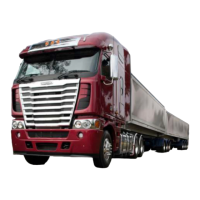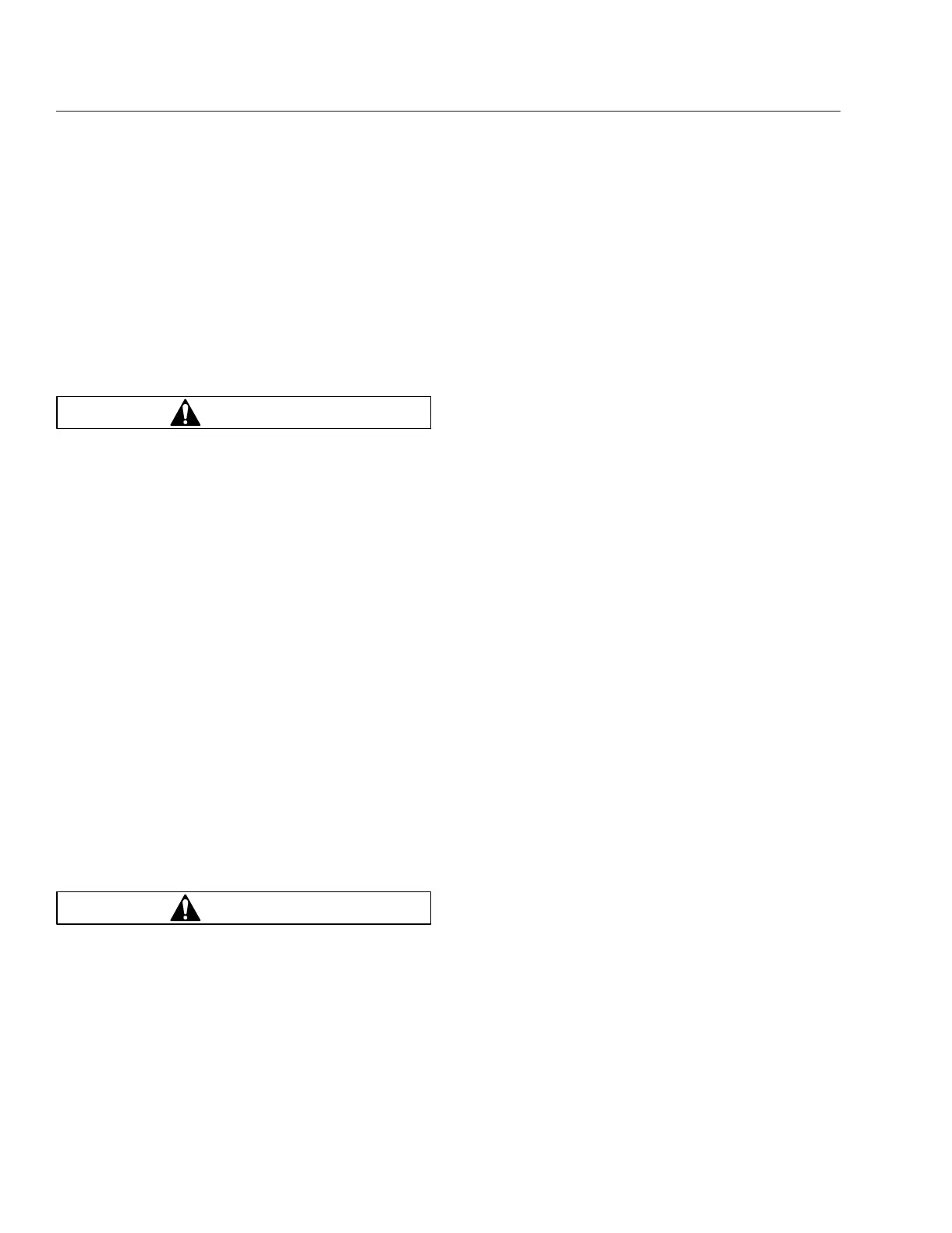11.1
Activate the high-beam headlights and
hazard warning lights.
11.2
Exit the cab and check that all exterior
lights and reflectors are clean and intact.
11.3
Check that the brake lights, taillights,
headlights, turn signals, marker lights,
identification lights, and clearance lights
are working properly.
12.
Inspect the seat belts and tether belts.
WARNING
Inspect and maintain seat belts. When any part of
a seat belt system needs replacement, the entire
seat belt must be replaced, both retractor and
buckle side. Any time a vehicle is involved in an
accident, and the seat belt system was in use,
the entire vehicle seat belt system must be re-
placed before operating the vehicle. Do not at-
tempt to modify the seat belt system; doing so
could change the effectiveness of the system.
Failure to replace worn or damaged seat belts, or
making any modifications to the system, may re-
sult in personal injury or death.
12.1
Check the web for fraying, cuts, extreme
dirt and dust, or for severe fading from
exposure to sunlight, especially near the
buckle latch plate and in the D-loop guide
area.
12.2
Check operation of the buckle, latch, web
retractor, and upper seat belt mount on
the door pillar. Check all visible compo-
nents for wear or damage.
12.3
Check the seat belt and tether belt con-
nection points and tighten any that are
loose.
WARNING
Never fill fuel tanks to more than 95 percent of
their liquid capacity. This could make them more
likely to rupture from impact, possibly causing
fire and resulting in serious personal injury or
death by burning.
Do not mix gasoline or alcohol with diesel fuel.
This mixture could cause an explosion, possibly
resulting in serious personal injury or death. Do
not fill the fuel tanks in the presence of sparks,
open flames, or intense heat. These could ignite
the fuel, possibly causing severe burns.
IMPORTANT: On engines that are equipped with
an exhaust ATS, use ultralow-sulfur diesel
(ULSD) with 15 ppm sulfur content or less.
13.
Check the fuel level in the fuel tank(s). To keep
condensation to a minimum, fuel tanks should be
filled at the end of each day.
14.
Adjust the rearview and down view mirrors as
necessary.
15.
Test the service brakes.
15.1
With the engine running and air system
fully charged, set the parking brake.
15.2
Put the vehicle in the lowest gear and
gently attempt to move it forward. The ve-
hicle should not move.
If the vehicle moves, the parking brakes
are not operating correctly and must be
repaired before the vehicle is operated.
16.
Test the backup alarm.
16.1
Release the parking brake and put the
transmission in reverse.
16.2
Move the vehicle slightly backward to en-
sure that the backup alarm is operating
correctly.
Weekly Post-Trip Inspections
and Maintenance
Air Intake System Inspection
After resetting the air intake restriction indicator dur-
ing the daily pretrip inspection, check the indicator
again with the engine off.
1.
Check an indicator with graduations to see if air
restriction exceeds the value shown in
Table 23.2.
Check a go/no-go indicator without graduations
to see if the colored bar shows through the clear
window.
Pre- and Post-Trip Inspections and Maintenance
23.7

